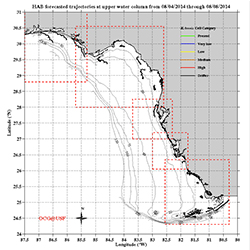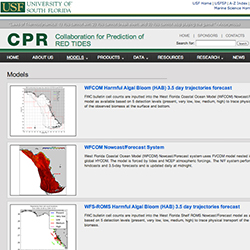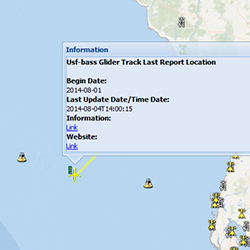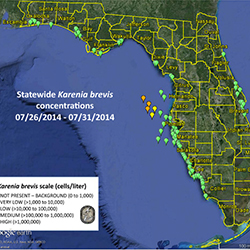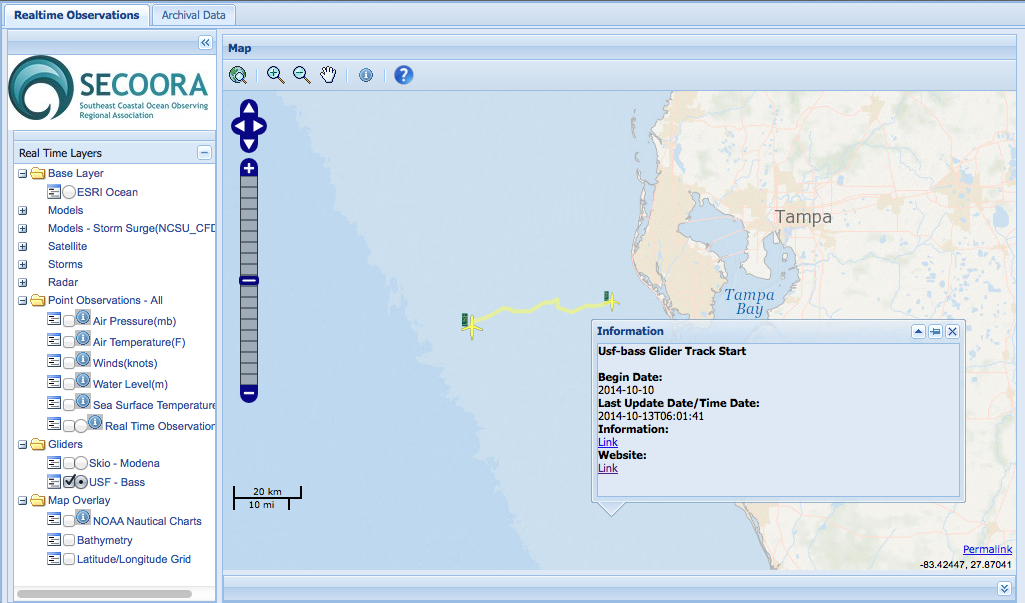Red Tide Resources:
|
WFCOM Harmful Algal Bloom (HAB) 3.5 day trajectories forecast
|
FWC bulletin cell counts are inputted into the West Florida Coastal Ocean Model (WFCOM) Nowcast/Forecast model as available based on 5 detection levels (present, very low, low, medium, high) to trace physical transport of the observed biomass at the surface and bottom.
|
|
USF Collaboration for Prediction of Red Tides Models
|
|
|
USF Bass Glider
|
Follow USF’s Bass Glider as it monitors and maps the red tide bloom.
|
|
As a joint effort of tracking and predicting the red tides in the eastern Gulf of Mexico and the U.S. southest coasts, a Slocum glider was deployed off the west Florida coast by the Ocean Technology Group at College of Marine Science, University of South Florida. The glider is collecting oceanographic data in the water clomun across the West Florida Continental Shelf. The near real-time data are shown in the following preliminary plots.
|
|
|
FWC Red Tide Updates
|
Read summary reports of the current red tide conditions around Florida, including a map of sampling results and regional status reports.
|
Related news
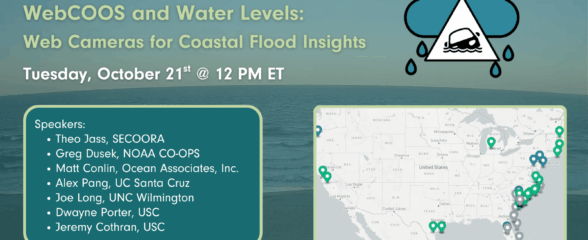
SECOORA Webinar | WebCOOS and Water Levels: Web Cameras for Coastal Flood Insights
On October 21st at 12 PM ET, SECOORA is hosting a webinar with investigators from the Webcam Coastal Observation System (WebCOOS) project team and the WebCOOS Project Manager. Web cameras are a low-cost technology that can be used to document flooding impacts to coastal communities. Register here.

SECOORA Funding Opportunity Announcement: Letters of Intent Solicitation
SECOORA will submit a coordinated regional proposal in response to the anticipated FY 2026 Implementation of the U.S. Integrated Ocean Observing System (IOOS) funding opportunity. Letters of Intent to be considered for inclusion in SECOORA’s full proposal are due September 9, 2025.

SECOORA Hosts the First Surface Elevation Table (SET) Community of Practice Virtual Workshop
The SECOORA SET Workshop was virtual on July 17, 2025. More than 50 Community of Practice members and stakeholders joined this collaborative workshop to discuss SET monitoring, coastal resilience, and data-driven decision making in the Southeast.
